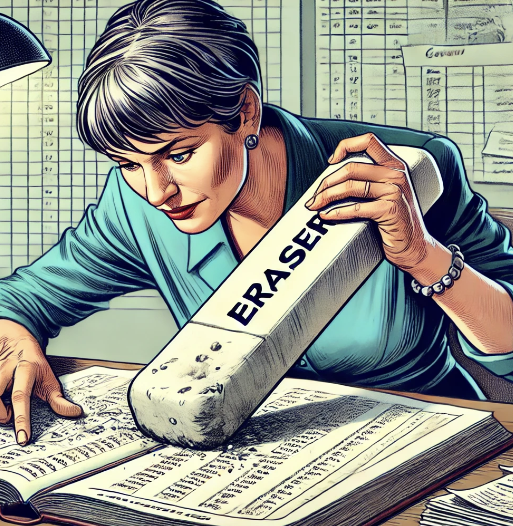
In a remote corner of Camp Branch Acres, where roads are paved with good intentions and bylaws are buried deeper than old treasure, the unsung heroes of accounting embark on a daring mission. They aren’t astronauts or mathematicians, but their work is just as complex—if you ask them. Welcome to the world of “Hidden Figures,” where transparency is the final frontier.
Act I: The “Mess” Kelly Feral Took Over
Meet Kelly Feral, the POA’s former treasurer, who inherited a “complete mess” from her predecessor. Or so she claims. With the air of a seasoned detective uncovering decades-old secrets, Kelly rolled up her sleeves and dived into the POA’s financial abyss, determined to bring order to the chaos. Of course, this chaos was all in her head, but that didn’t stop her from pontificating about the monumental task she faced.
“Nothing was organized,” she would lament, shuffling through stacks of papers like a magician trying to pull a rabbit out of a hat. “The previous treasurer had no idea what they were doing. They didn’t even know how to mischaracterize transactions properly to avoid taxes! It’s amateur hour out here!”
Act II: Creative Accounting and the Art of Mischaracterization
Kelly wasn’t just cleaning up a mess—she was innovating. In her hands, ordinary expenses became extraordinary mysteries. That lunch receipt? Clearly a charitable donation to the “Fund for Unfed Board Members.” The payment to her son for “consulting services”? A vital expenditure for “community enrichment.” And those association dues coming in? They all got the special “friends and family” treatment on PayPal, because who wants to bother the IRS with something so trivial, or pay a couple bucks to stay honest?
“Every transaction is an opportunity,” Kelly would say, channeling her inner financial visionary. “It’s not about what the money was actually used for; it’s about what it could be used for, in theory.”
Of course, when hard questions came her way—like why certain expenses never seemed to add up or where a mysterious payment had disappeared to—Kelly had a well-rehearsed response ready: “I’m sorry, I don’t understand the question?” It was her go-to line, deployed with a smile that suggested the problem wasn’t with the books, but with your ability to grasp their complexity.
Act III: The Quest for Compliance (Or Something Like It)
Despite her flair for creative accounting, Kelly knew that whispers about her methods were growing louder. She needed a new narrative, fast. So, she launched a campaign of compliance—a one-woman mission to align the POA’s books with some version of reality.
“I’m working hard to get us into compliance,” Kelly assured the skeptical few who dared to question her. “It’s a long road, but with enough ‘adjustments,’ we’ll get there. I’m making sure everything looks as legitimate as possible. It’s all part of my plan to keep the IRS off our backs. After all, transparency is overrated when you’re this good at accounting.”
Epilogue: The Legacy of Hidden Figures
Kelly Feral may have moved on from her role as treasurer, but her legacy lives on. The POA’s books remain as clear as mud, with financial reports that read like the plot of a suspense thriller—full of twists, turns, and enough gaps to keep everyone guessing.
In the end, “Hidden Figures” isn’t just the story of one woman’s fight against transparency. It’s a tribute to all those unsung heroes who toil away in the shadows, keeping the true state of the POA’s finances hidden from view. After all, why let the truth get in the way of a good story—or a good tax dodge?
So, the next time you hear someone complaining about a lack of transparency, just remember: it’s not a bug, it’s a feature. And Kelly Feral was its most talented architect—armed with a calculator, a smirk, and her classic line: “I’m sorry, I don’t understand the question?”
Leave a Reply
You must be logged in to post a comment.